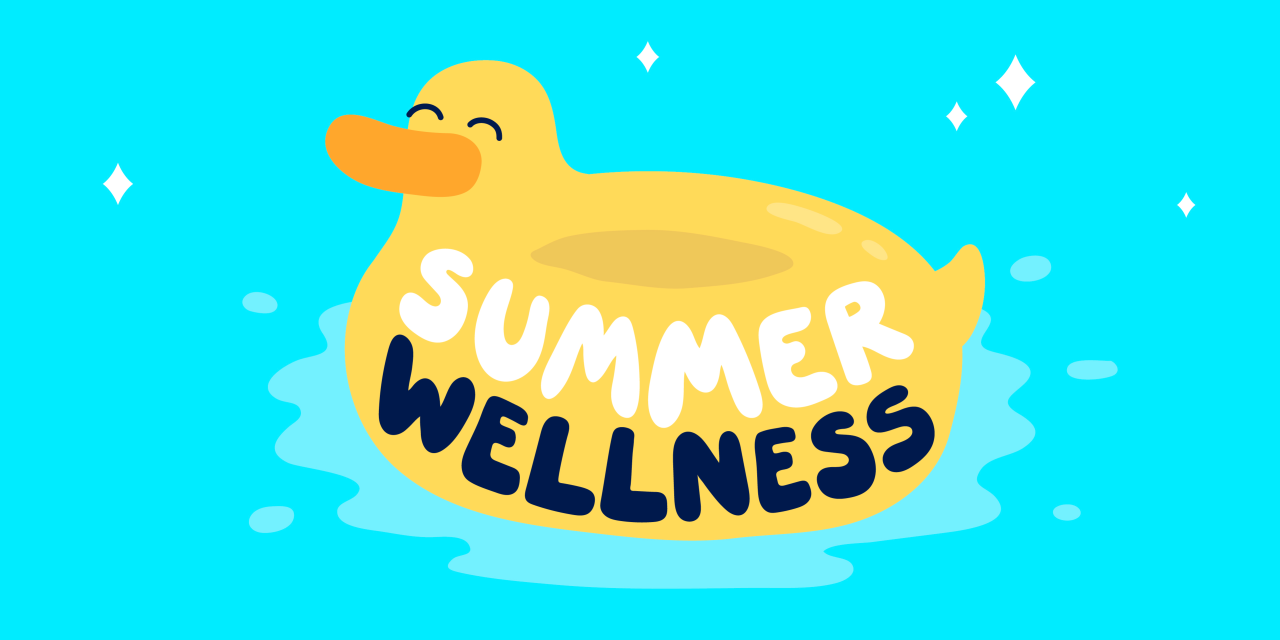
How to Create a Buzz with Summer Wellness Challenges at Work
Summer is not just about vacations and downtime; it's also a great opportunity for workplaces to promote health and well-being. Despite the common fear among HR professionals that summer wellness challenges might intrude on employee vacations, there is compelling evidence that suggests otherwise. A surprising 70% of employees express a desire for more physical activity options during work hours, pointing to a significant interest in initiatives that promote health, even during the summer months. This presents an ideal scenario for HR to introduce wellness challenges that not only respect but enhance the summer experience, providing benefits that employees actually crave.
Table of Contents
Understanding Employee Needs During Summer
1. Vacation Time and Work-Life Balance
During the summer, the pull between wanting to relax and staying active creates a unique opportunity for HR departments. While vacations are sacred, they also offer a chance to break from routine and engage in new forms of wellness activities. Employees often return from vacation rejuvenated, not only by rest but also through diverse experiences that include physical activities. Summer wellness challenges should, therefore, be designed to complement the vacation experience, not compete with it.
2. Desire for Flexibility
Flexibility is key in summer wellness programs. Employees appreciate the option to participate in wellness activities at their own pace and timing, which makes summer the perfect season to introduce more adaptable and voluntary wellness challenges. For instance, challenges could be set up in a way that they can be participated in from anywhere—whether someone is at home, in the office, or on a beach halfway around the world.
3. Benefits of Participation
Introducing wellness challenges during the summer can have several benefits, including improved physical health, better mental well-being, and enhanced social connections with colleagues. These programs can help maintain the momentum of workplace wellness initiatives throughout the year and keep employees engaged and connected with their peers, even if they are miles apart. This is particularly important in a hybrid work environment where employees may feel disconnected from their teams.
By focusing on these aspects, HR departments can craft summer wellness challenges that not only avoid intruding on vacation time but are anticipated and welcomed by employees. The key is to make participation a delightful addition to their summer, not a requirement.

Designing Non-Intrusive Wellness Challenges
1. Voluntary Participation
Emphasizing the voluntary nature of summer wellness challenges is crucial. It respects the personal time of employees and allows them to choose to engage on their own terms. This approach helps prevent any feelings of obligation that might detract from their holiday enjoyment. By promoting voluntary participation, you encourage a sense of autonomy and ownership, which can significantly boost engagement and enthusiasm among employees.
2. Flexible Challenges
To truly cater to the needs of all employees during the summer, wellness challenges should be as flexible as possible. This means setting up activities that can be performed at any time and any place, allowing employees to integrate wellness into their personal vacation schedules seamlessly. For example, a challenge could involve tracking steps daily, which can be done while exploring a new city, hiking a mountain, or simply taking a walk in the local park. Another idea could be a virtual yoga session that can be accessed via a simple link from anywhere in the world.
3. Integration with Vacation
Design challenges that can enhance the vacation experience rather than compete with it. For instance, a photo challenge that encourages employees to share pictures of their healthy meals or scenic walks can integrate well with typical vacation activities. These challenges should not only promote physical health but also enhance the mental and emotional well-being of employees, making their vacation more fulfilling.
Engaging and Relevant Challenge Ideas
1. Travel-Friendly Challenges
Introduce wellness challenges that employees can easily incorporate into their travel plans. This could include a challenge to try different physical activities that are popular in their vacation destinations, like paddle boarding, rock climbing, or cycling. These activities encourage physical fitness while allowing employees to immerse themselves in new experiences.
2. Seasonal Activities
Take advantage of the summer season by suggesting wellness activities that are best enjoyed in warmer weather. This could include swimming challenges, outdoor group fitness classes, or even gardening competitions. These activities not only encourage physical health but also help employees to enjoy the outdoors and the unique aspects of summer.
3. Group and Solo Options
Offer both individual and team challenges to cater to different preferences. Some employees might enjoy the camaraderie and motivation that comes from team activities, while others may prefer solo challenges that they can do at their own pace. For example, a virtual race event where participants can run, bike, or swim in their local area and log their times online can cater to both group participants and individuals.
By focusing on these elements, you can design summer wellness challenges that are both engaging and sensitive to the needs of employees during their vacations. These challenges will not only promote a healthy lifestyle but also enhance the overall vacation experience, making them a welcomed addition to the summer break.
Motivating Employees Through Communication and Rewards
1. Clear Communication
Effective communication is essential to motivate employees to participate in summer wellness challenges. It’s important to convey the benefits of the challenges and how they can enhance their summer experience. Highlight the flexibility and voluntary nature of the challenges, ensuring employees understand they can engage at their own comfort level without feeling pressured. Use engaging mediums like emails, intranet posts, and visually appealing posters or videos that explain how to participate, the goals of the challenge, and what they stand to gain by joining.
2. Incentives
While intrinsic motivation can be strong, adding tangible rewards can significantly increase participation rates. Choose incentives that resonate with the summer vibe, such as tickets to outdoor events, sports equipment, or gift vouchers for travel and leisure activities. These rewards should not only appeal to the competitive spirit but also enhance the overall wellness experience, making participation more enticing.
3. Recognition
Public recognition can be a powerful motivator. Plan to acknowledge both the efforts and achievements of participants in company-wide communications. For team challenges, consider featuring the winning team in the company newsletter or on the corporate social media pages. For individual challenges, a simple certificate or shout-out during company meetings can go a long way in making participants feel valued. This type of recognition helps build a positive workplace culture where employees feel appreciated and motivated to engage in future initiatives.

Leveraging Technology for Ease and Engagement
1. Use of Apps
Technology, particularly wellness apps like YuMuuv, plays a crucial role in facilitating seamless and engaging participation in wellness challenges. These platforms can track activities, log progress, and even provide virtual visualization on achievements, which can add an element of fun and competitiveness. They also enable employees to participate and connect with colleagues regardless of their location, making it ideal for remote or hybrid teams.
2. Remote Engagement
Encourage the use of social media or dedicated online forums where participants can share their progress, tips, and photos. This not only fosters a sense of community among employees but also keeps the momentum going as they see updates from their colleagues. For instance, create a hashtag for the summer wellness challenge and encourage employees to use it when posting about their activities. This creates a virtual community of participants, supporting each other and sharing in the collective experience of the challenge.
By incorporating these strategies, you can effectively motivate employees to participate in summer wellness challenges. Clear communication, enticing incentives, and robust recognition efforts combined with the use of modern technology can create a buzz around the challenges, making them a highly anticipated and integral part of the summer experience at work.
Success Stories and Testimonials
1. Employee Feedback
Sharing testimonials from employees who have previously participated in summer wellness challenges can be a powerful motivator for others to join. Include quotes or short interview clips in your promotional materials where participants discuss how these challenges positively impacted their physical health, mental well-being, and overall vacation experience. For instance, feature stories where employees share how integrating wellness activities into their vacations brought them closer to their families or helped them discover new hobbies.
2. Company Benefits
Highlighting the organizational benefits that stemmed from previous summer wellness challenges can also help bolster participation. Present data and anecdotes about increased employee engagement, improved health outcomes, and enhanced job satisfaction. Showcasing how these programs have led to lower healthcare costs, reduced absenteeism, and higher productivity during the summer months can make a compelling case to both employees and management.

Conclusion
1. Recap
Summer wellness challenges offer a unique opportunity to enhance the health and happiness of employees in a way that complements their vacation plans and respects their need for downtime. By focusing on voluntary participation, flexibility, and incorporating incentives that genuinely add value to the summer experience, these challenges can become a highlight of the season.
2. Encouragement
Encourage HR departments and team leaders to view summer wellness challenges not as an imposition but as an enhancement to the employee experience. With thoughtful planning and execution, these challenges can foster a healthier, more connected workforce that carries the momentum of well-being throughout the year.
3. Feedback Invitation
Finally, invite feedback and suggestions from all employees on how these challenges can be improved or new ideas that could be implemented in the future. This not only helps in refining the programs but also engages employees by giving them a voice in the activities that shape their work life. Engage with your team through surveys or suggestion boxes dedicated to gathering insights on wellness initiatives.
